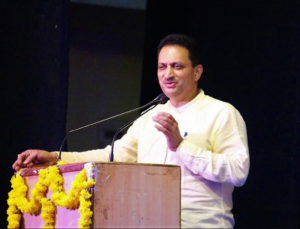Karnataka HC Asks State to Compensate Victims of Bellandur Demolition. But Where are the Victims?
Bengaluru: Within 48 hours of the demolition of several shanties in Bellandur ward on January 19, many of its residents had moved on — from the area and from the issue.
Most of them were migrant workers from north and northeast India, and some were from north Karnataka. Their homes were demolished after authorities suspected that the shanties housed illegal Bangladeshi immigrants. They were rendered homeless overnight.
Many among them left the place, some left the city and returned to their native villages and towns. Few others continue to live in their friends’ and neighbours’ sheds.
“My friend went home to his village in Assam that day itself. Where else would he go? His house is gone,” says Khairul Haque, a resident of Kariyammana Agrahara whose shed was among the ones demolished.
Khairul and his wife came to Bengaluru four years ago in search of work and his brother-in-law Shamshul Haque. Khairul works as a security guard in a nearby apartment building, while Shamshul works as a housekeeping staff in another apartment complex. All three, along with Shamsul’s brother, are now living in a friend’s home since their own homes were razed.
“They came with a JCB that Sunday (January 1). They said they will demolish our homes. We moved out. We lost a lot of things. Last year, too, they had come to demolish the houses. We are not saying there are no Bangladeshis in Bengaluru. It’s the police’s job to find out. We are common people. Our job is going to work, earning a living. Their job is to check documents and find out who are the Bangladeshis here,” says Shamshul.
The family migrated from Assam and are closely guarding a bundle of documents in case they are asked for papers at their new home, three rows from their demolished dwelling.
“We have all documents — PAN card, Aadhaar card and passport. We have come here to earn money. Why should we go back? If we have to, I won’t go alone. All of us from Assam will go. We have documents to travel to any place in India, then why trouble us like this? We are Indians. If we can’t live in India, then where should we go? Pakistan?” he adds.
According to these residents, police inspections and warnings to vacate the space come every year, especially after few Bangladeshis were are from some parts of the city. After 60 illegal immigrants from Bangladesh were detained and sent back, many had disappeared from their usual spots, including those who worked as house helps in nearby apartments for years.
But some like Ahadur Rahman do not want to discuss it anymore.
“We are Indians, why should we go? Where should we go? What has happened has happened. What next? Would we get electricity? We haven’t had power for days,” he says.
The only concern all of them show is about the lack of due procedure, and the sudden demolitions.
“We were born here. Why chase us? We are Indians. Why chase away Indians? They come here and demolish everything. You tell us one or two weeks earlier, we will take our children and go. But you suddenly come with your vehicle and demolish everything,” says Geetha, a daily wage labourer who lives in a small hut in the next row with her son and three-year-old grandson.
While authorities initially claimed they had given notices to slum-dwellers owners and had taken steps for demolition after nearby residents complained, the court found it all unsatisfactory.
Two house-owners impleaded in the case told the court that the shanty dwellers had vacated the area themselves after a police notice, which the court refused to believe. Marathahalli police inspector Gireesh BP, who issued the notice to the slum owners, and assistant executive engineer of Marathahalli sub-division of BBMP Narayan Swamy, who wrote to the police asking to be present during demolition, were transferred following the incident.
The court has now asked the state to respond on how and when it plans to compensate and rehabilitate the victims.
Social activists and volunteers are also working to get the details of the victims.
“The residents say around 300 shanties were demolished. It’s a large area with several small pockets. We have not been able to meet those from all 300. We have so far made a list of around 60 people. We are told around 40 of them have left,” said a volunteer, not wishing to be named.
The settlement is close to several high-rise buildings in this ward under the Marathahalli police station limits. Some of those affected have simply rebuilt their shanties in an area nearby. But almost all of them fear it is not forever. The state government has been asked to respond on February 10.





